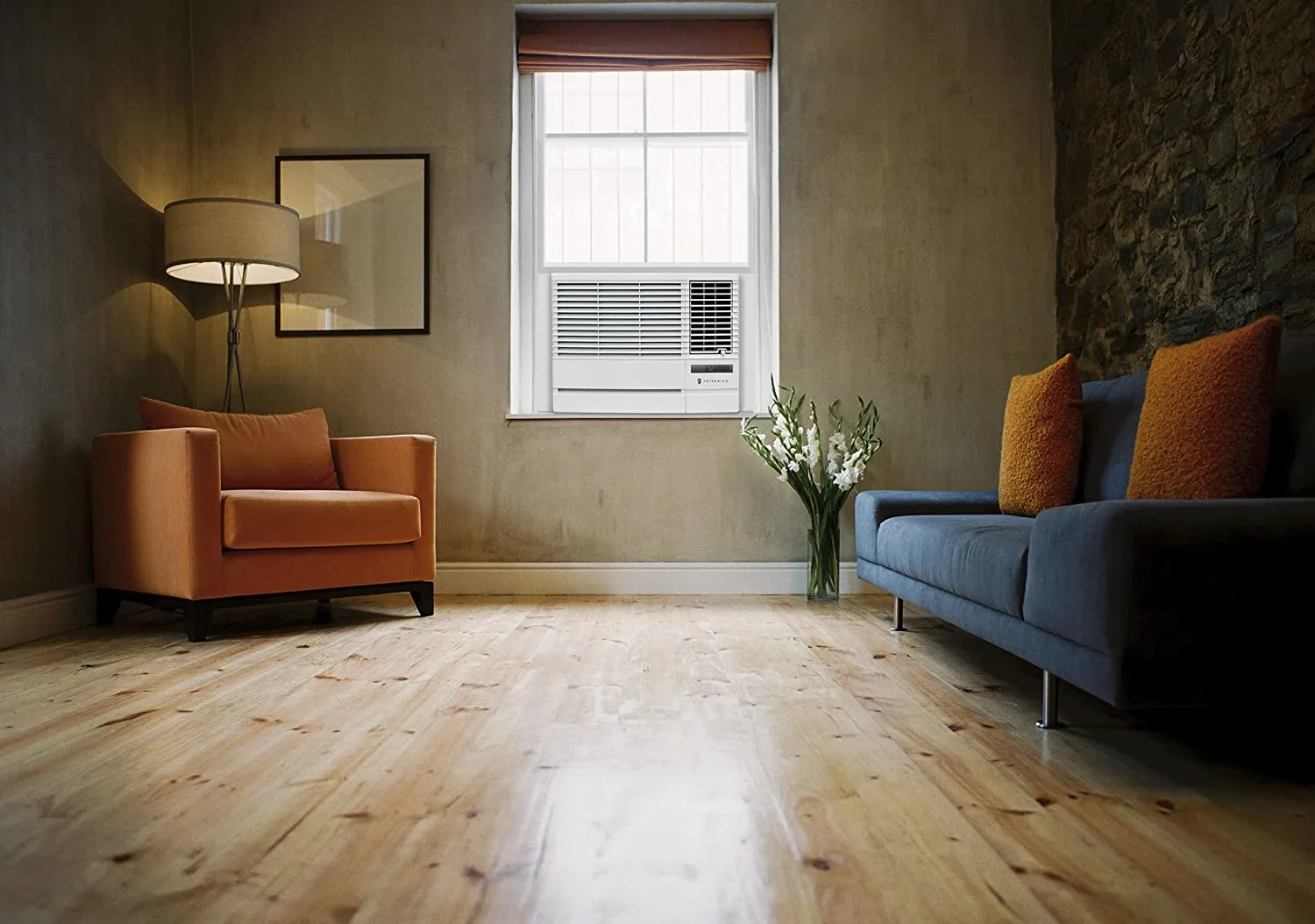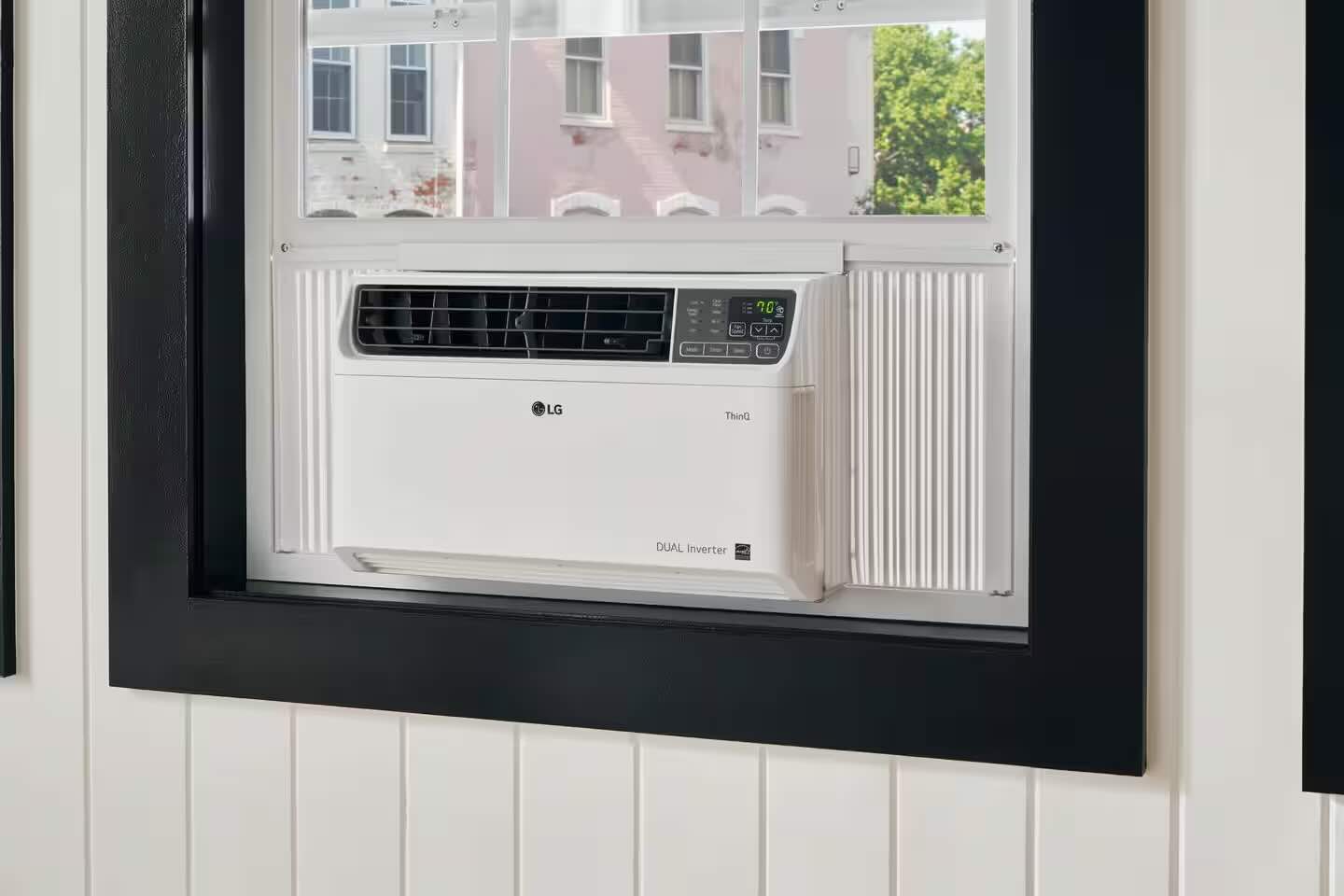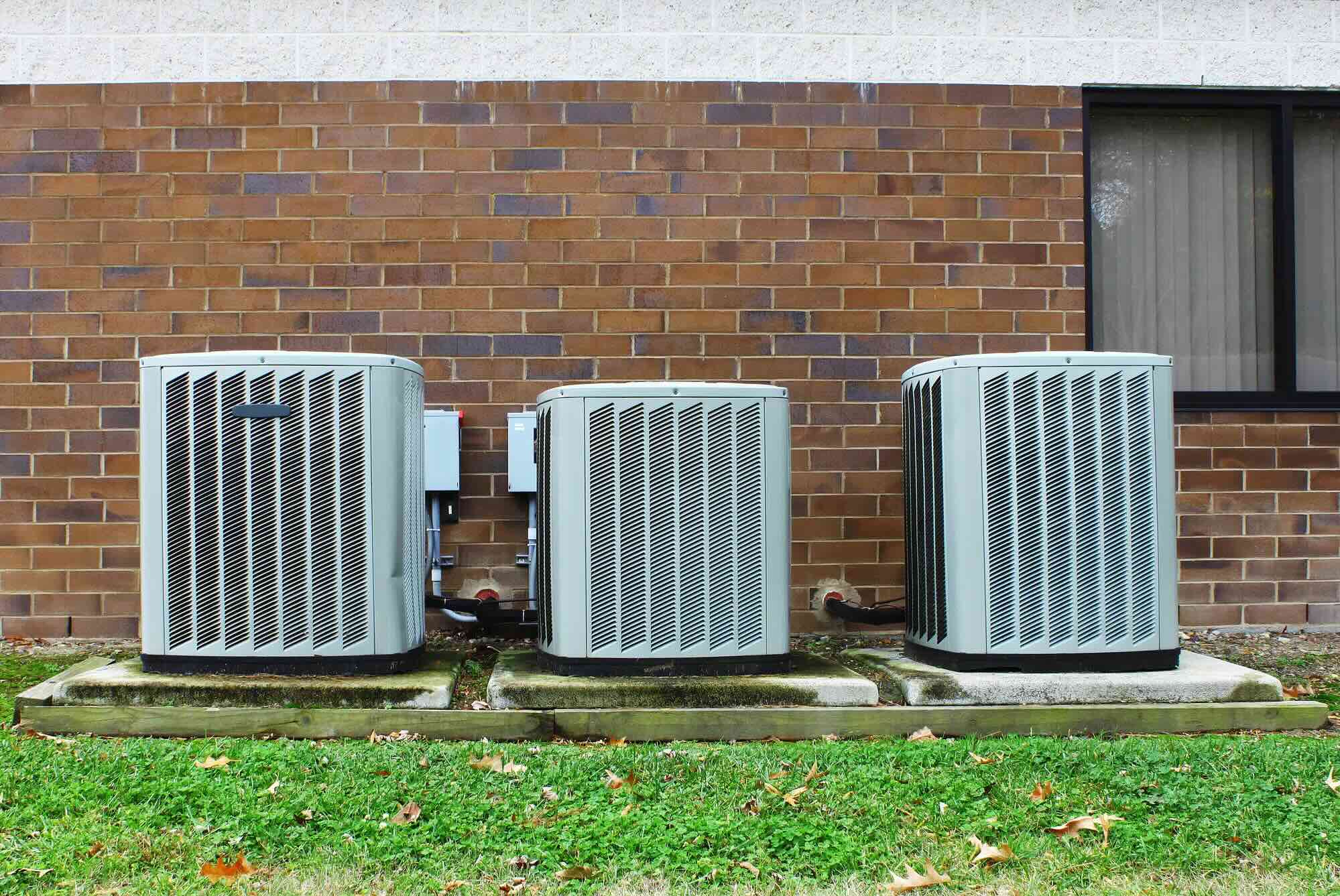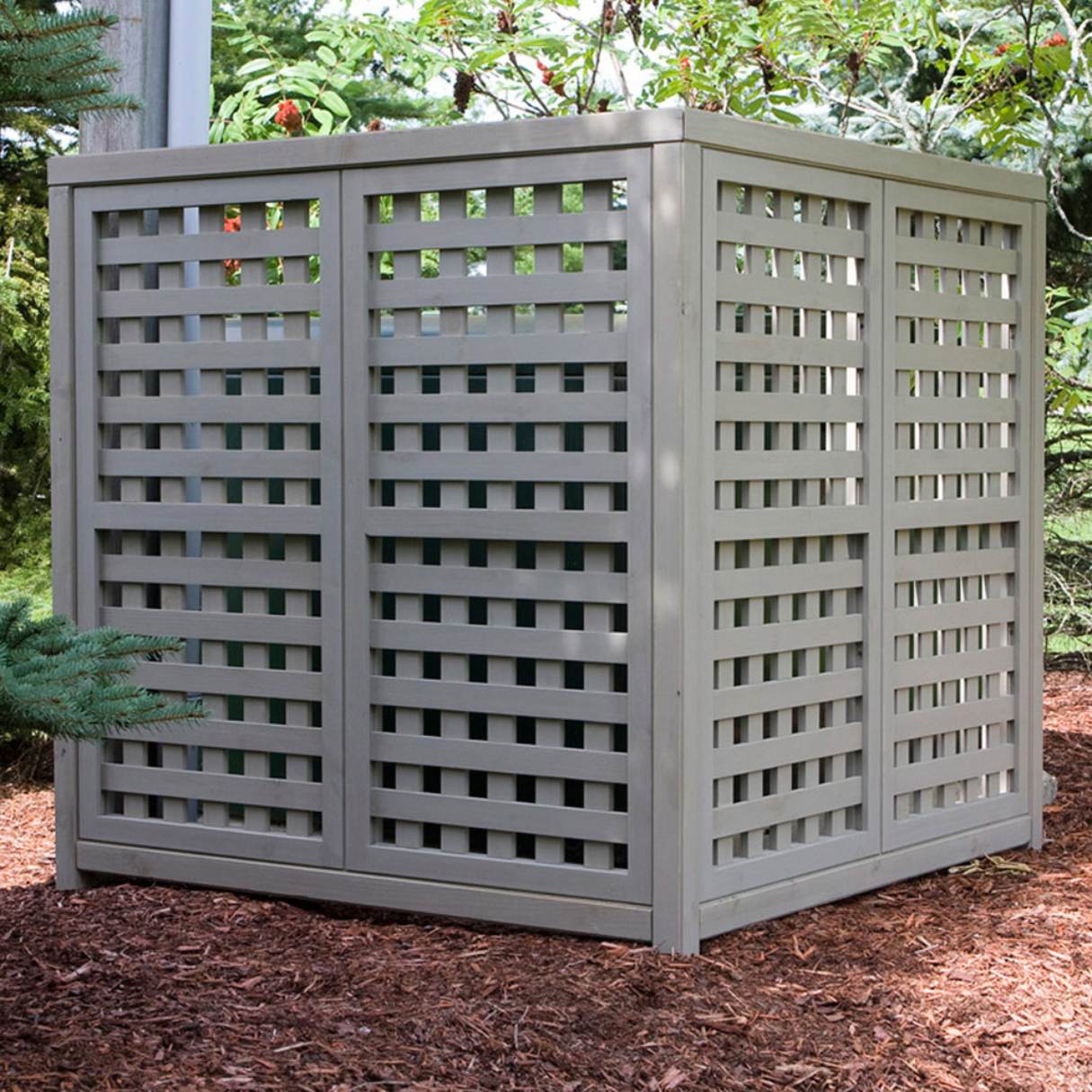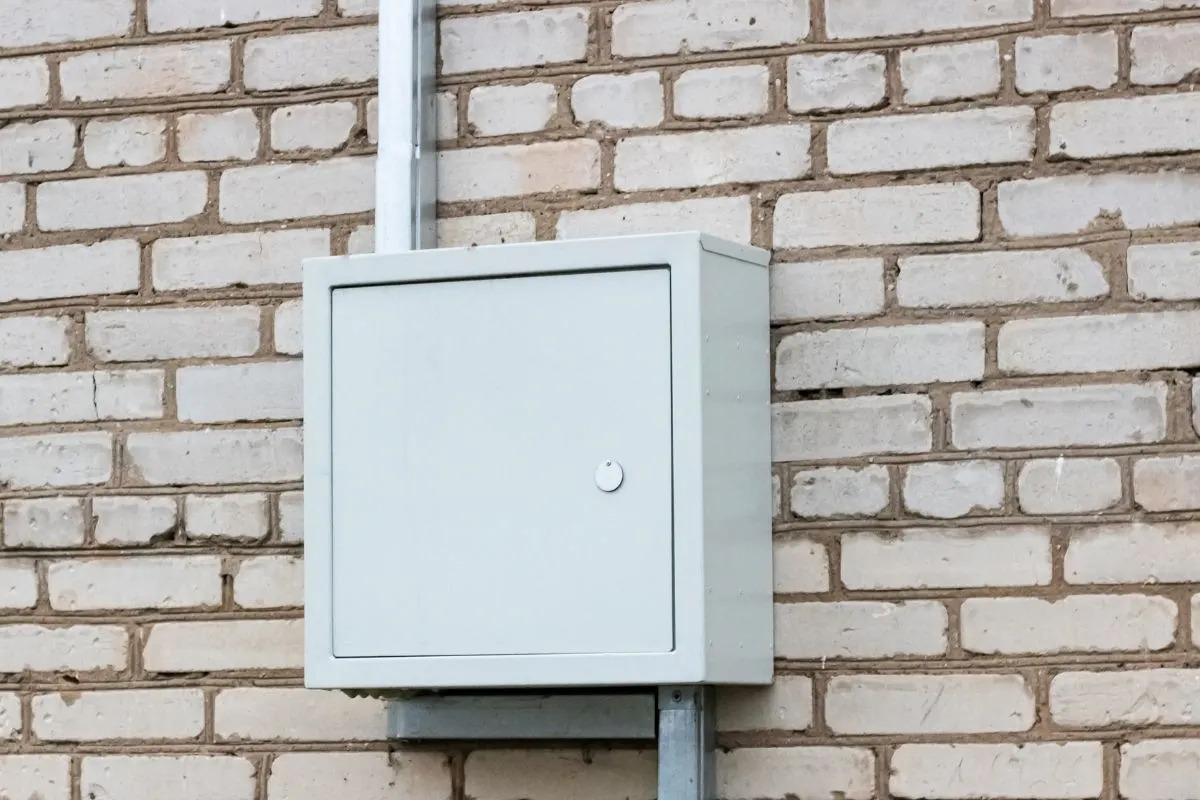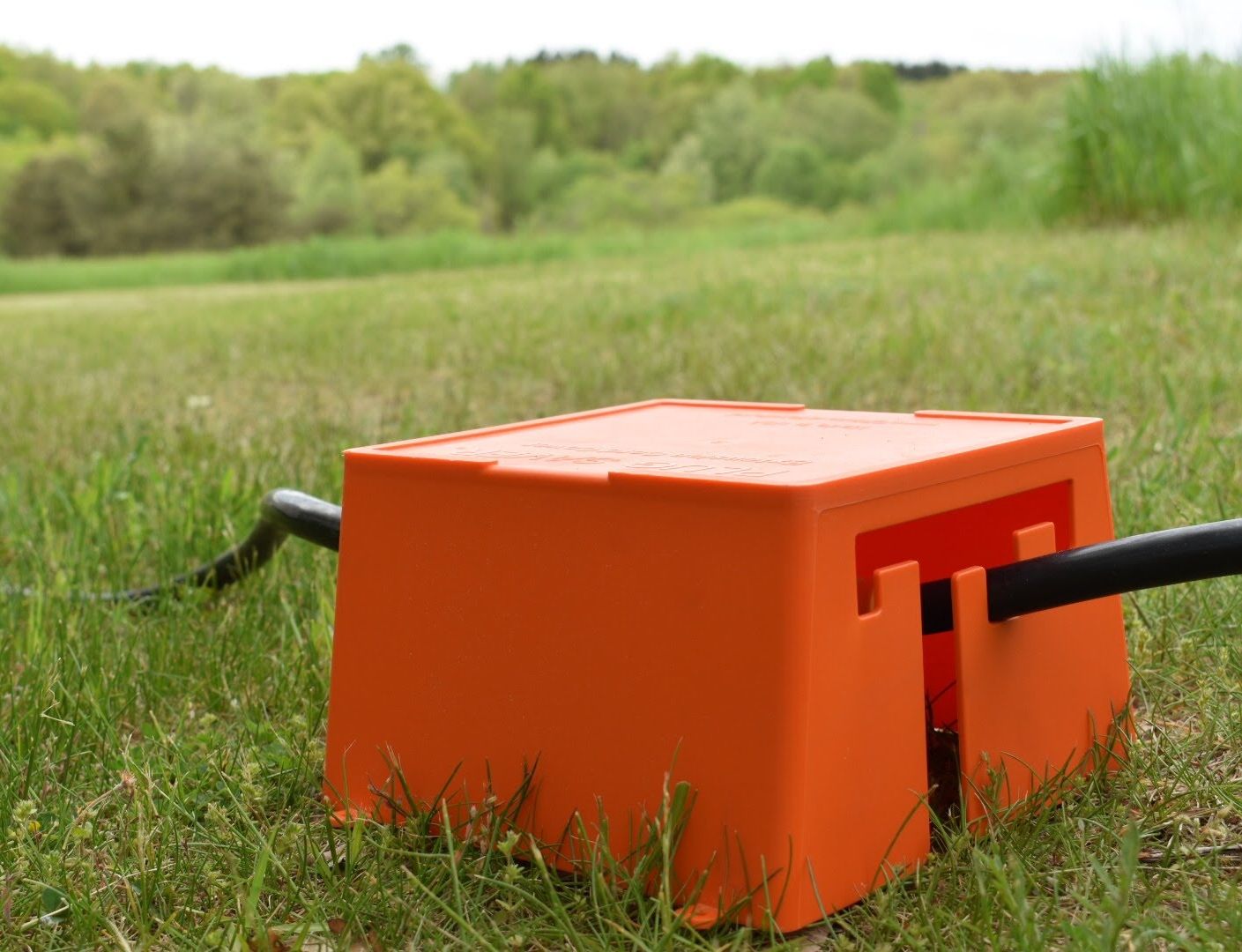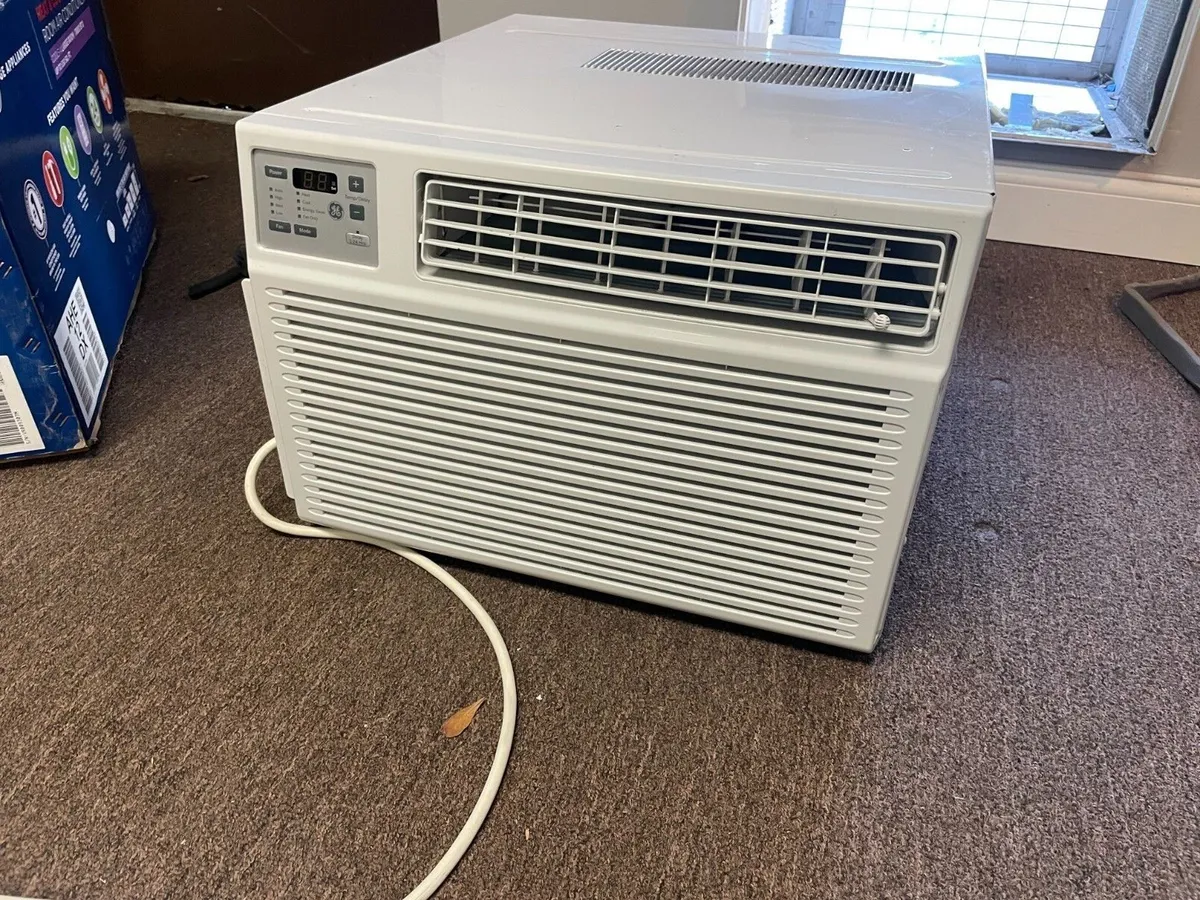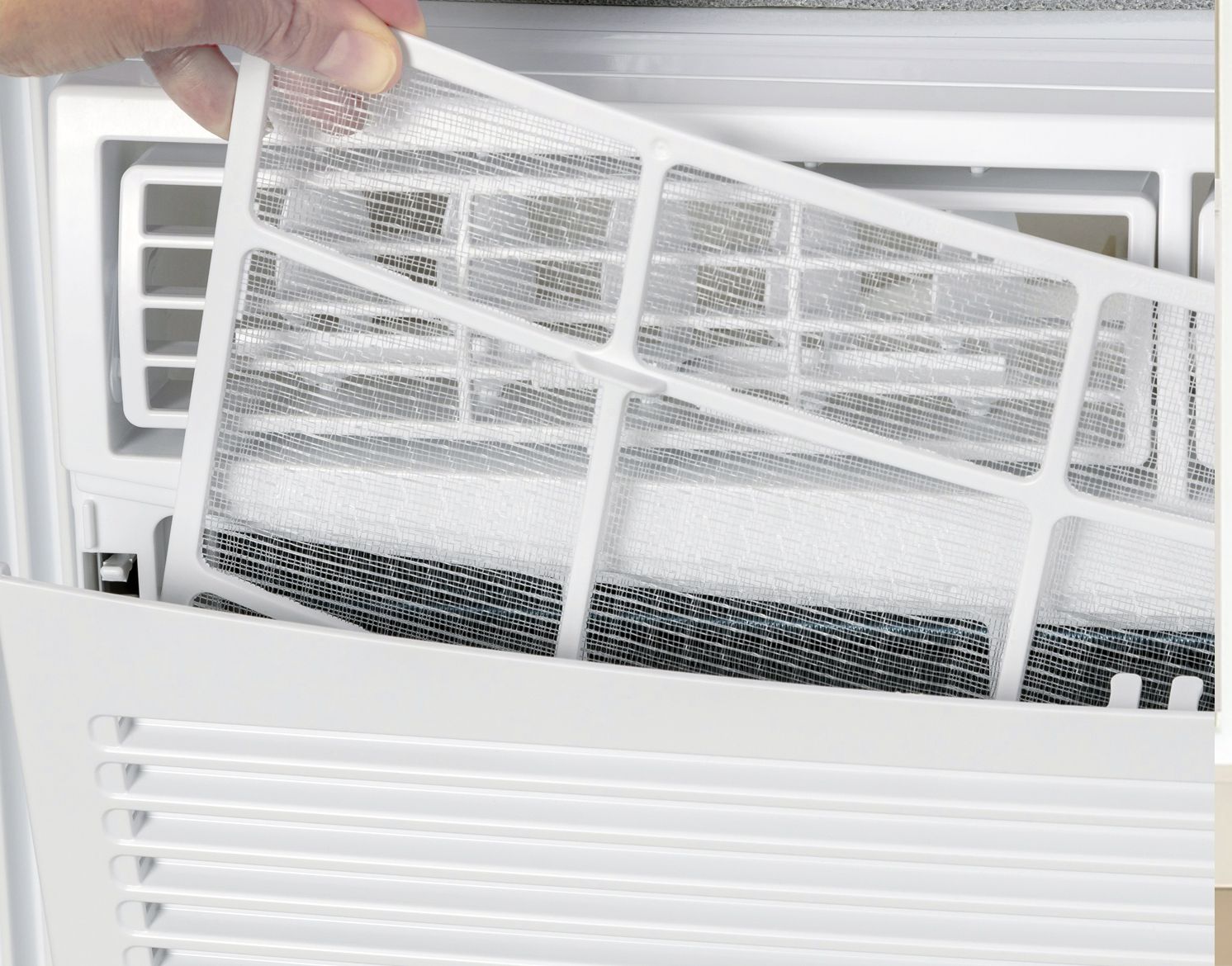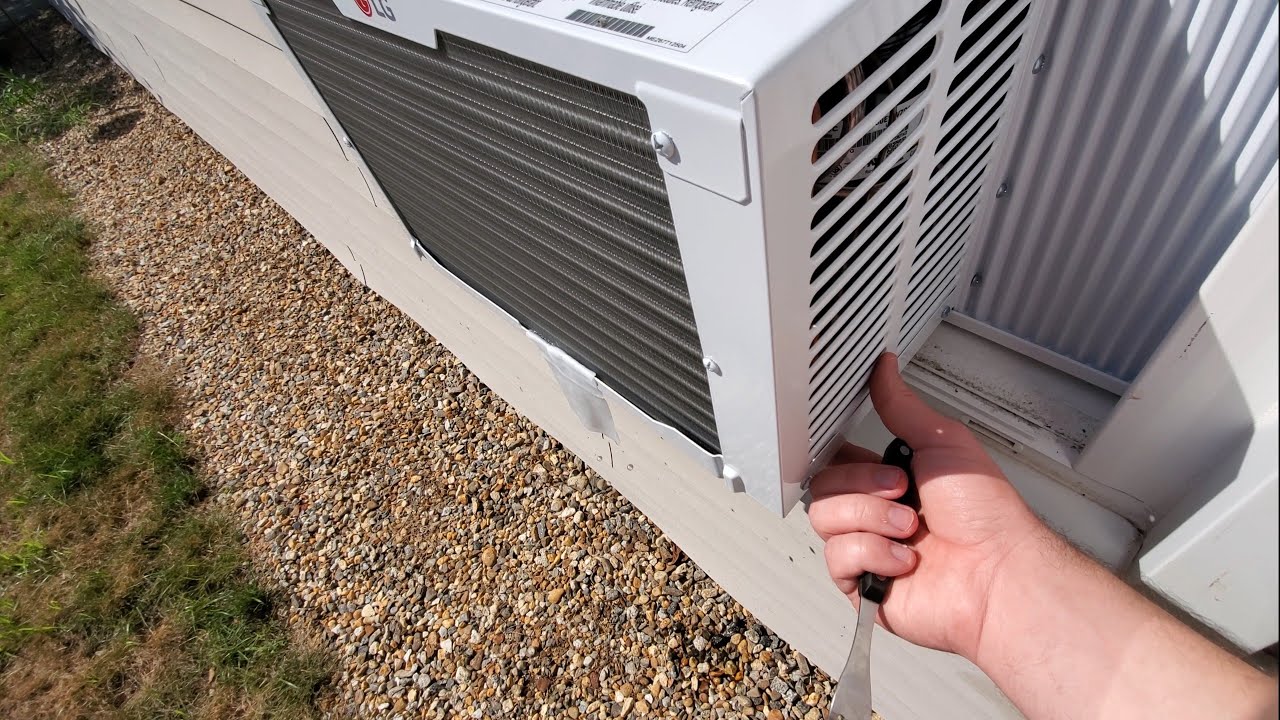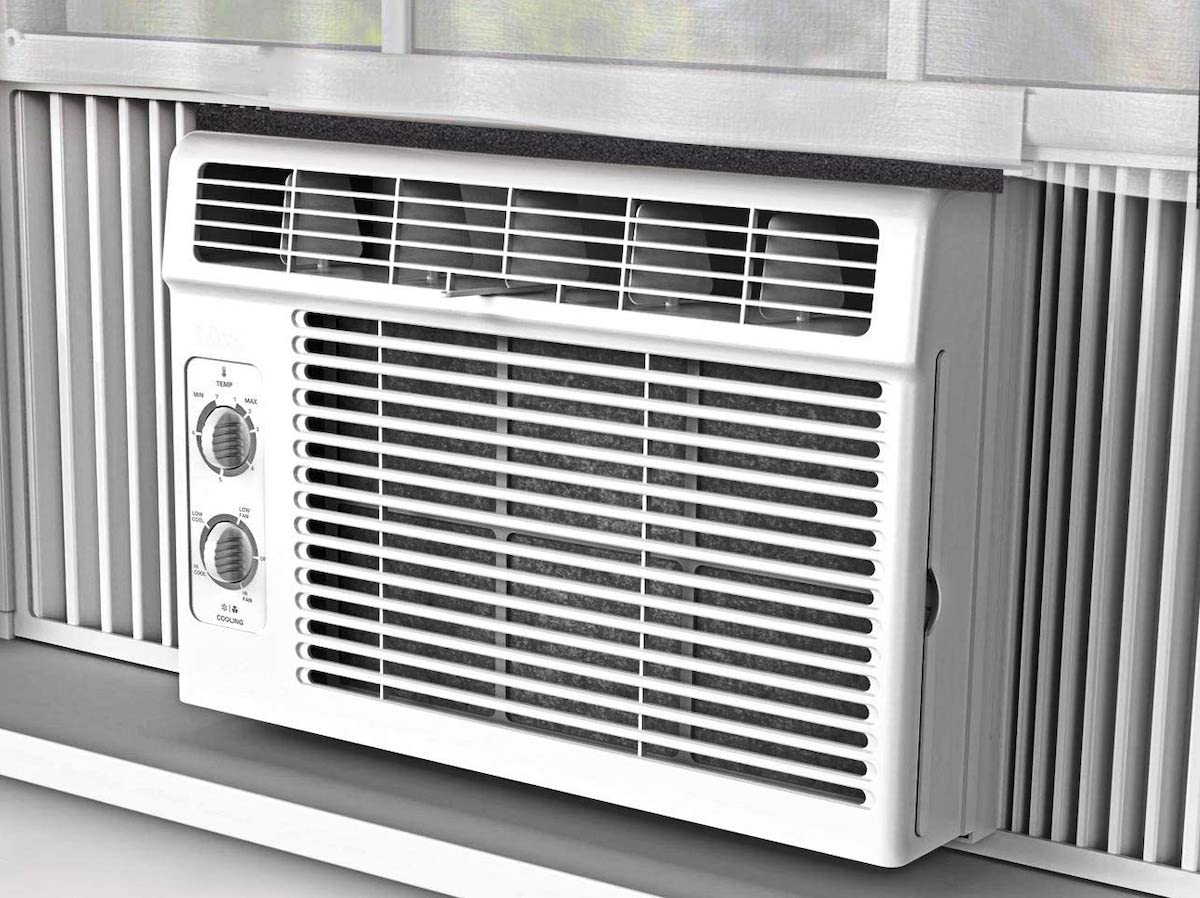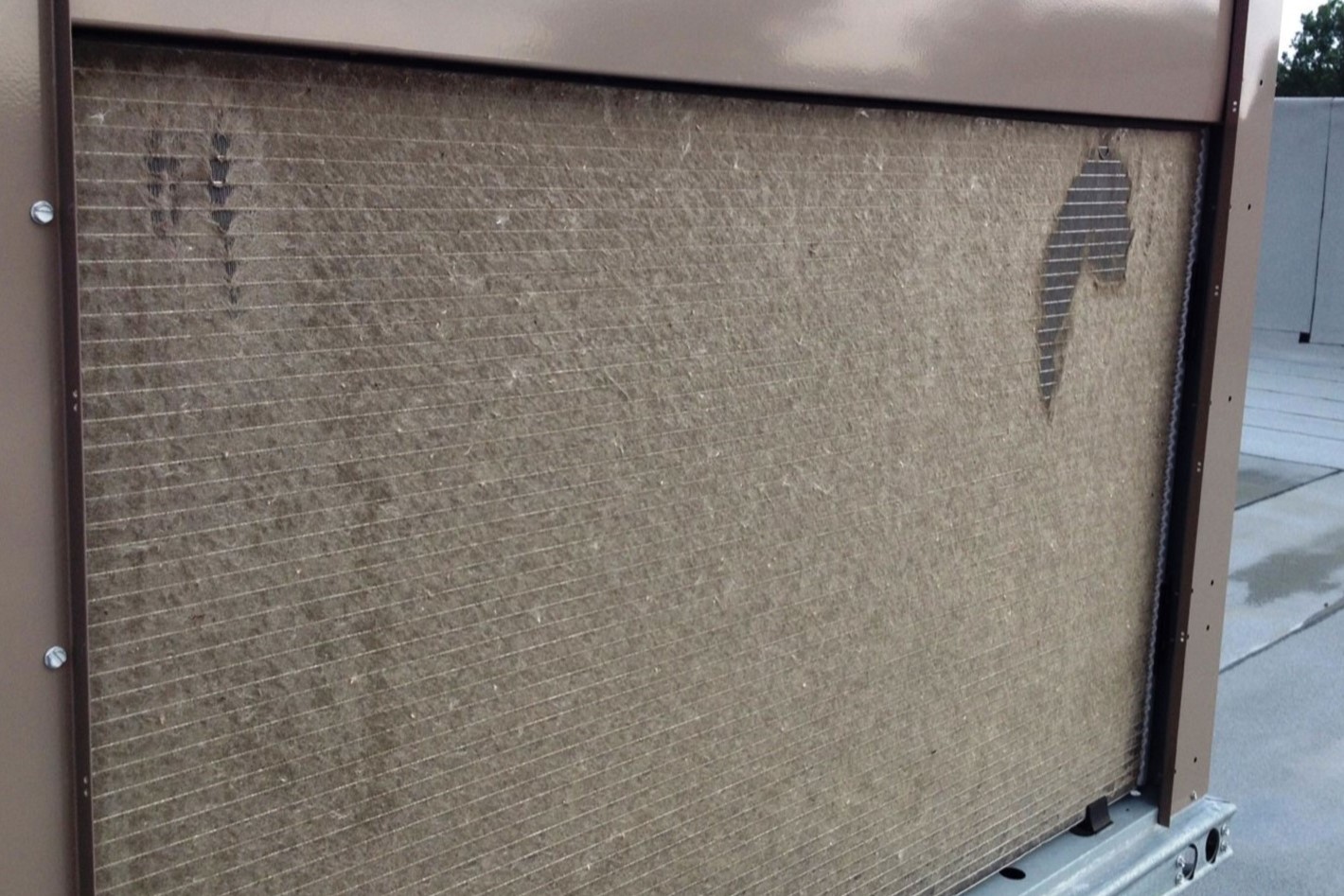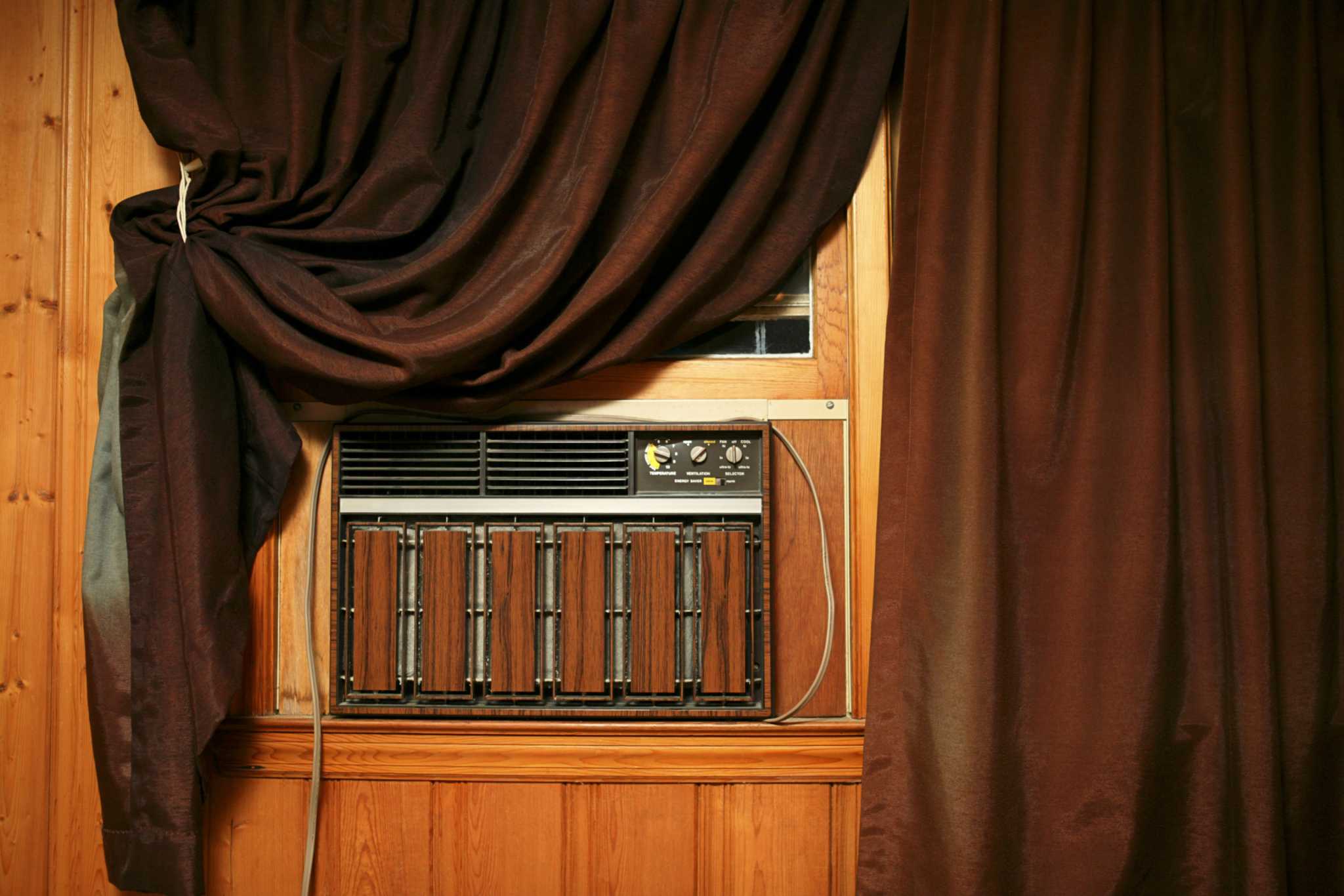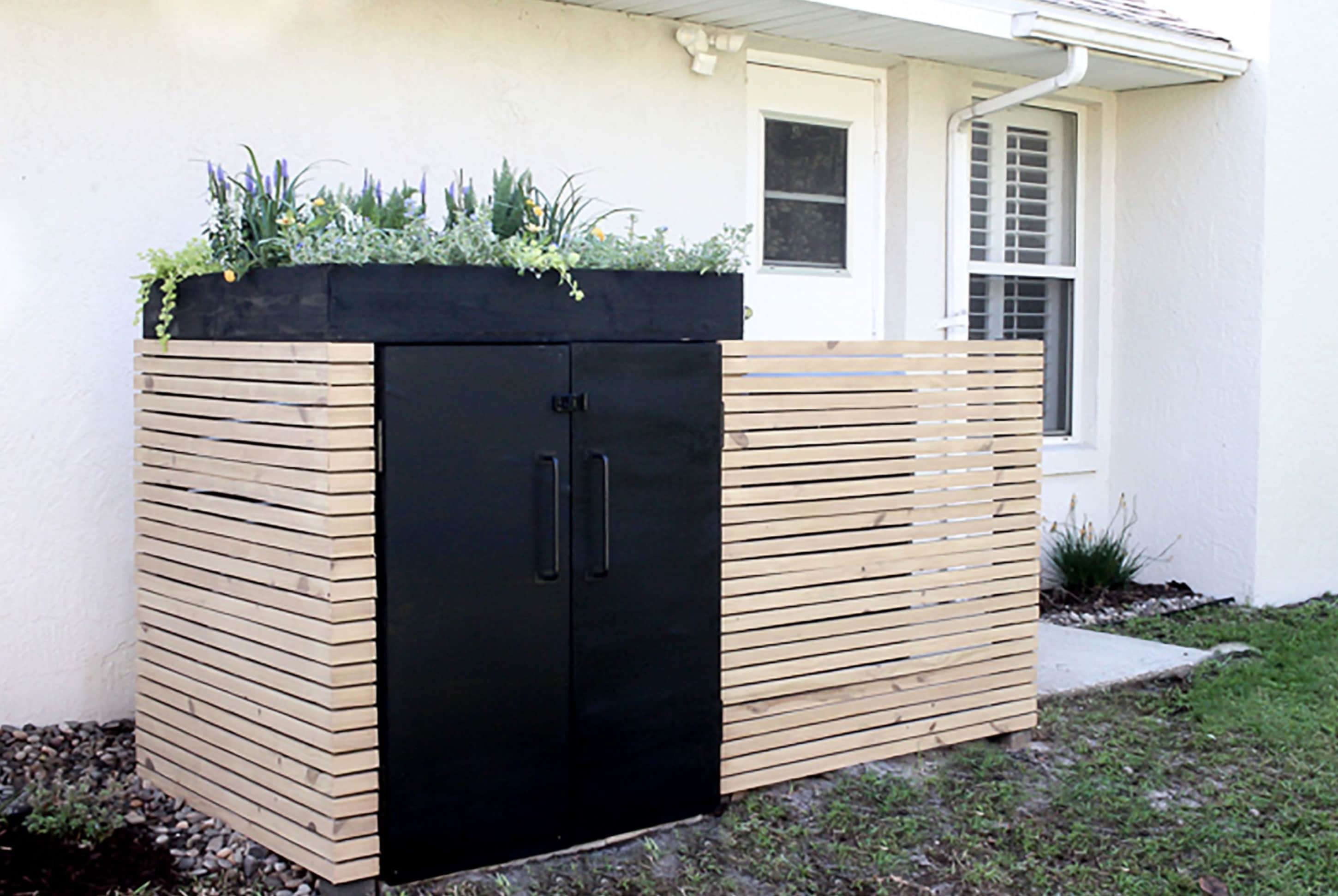Home>Home Maintenance>How To Hide A Window Air Conditioner From The Outside
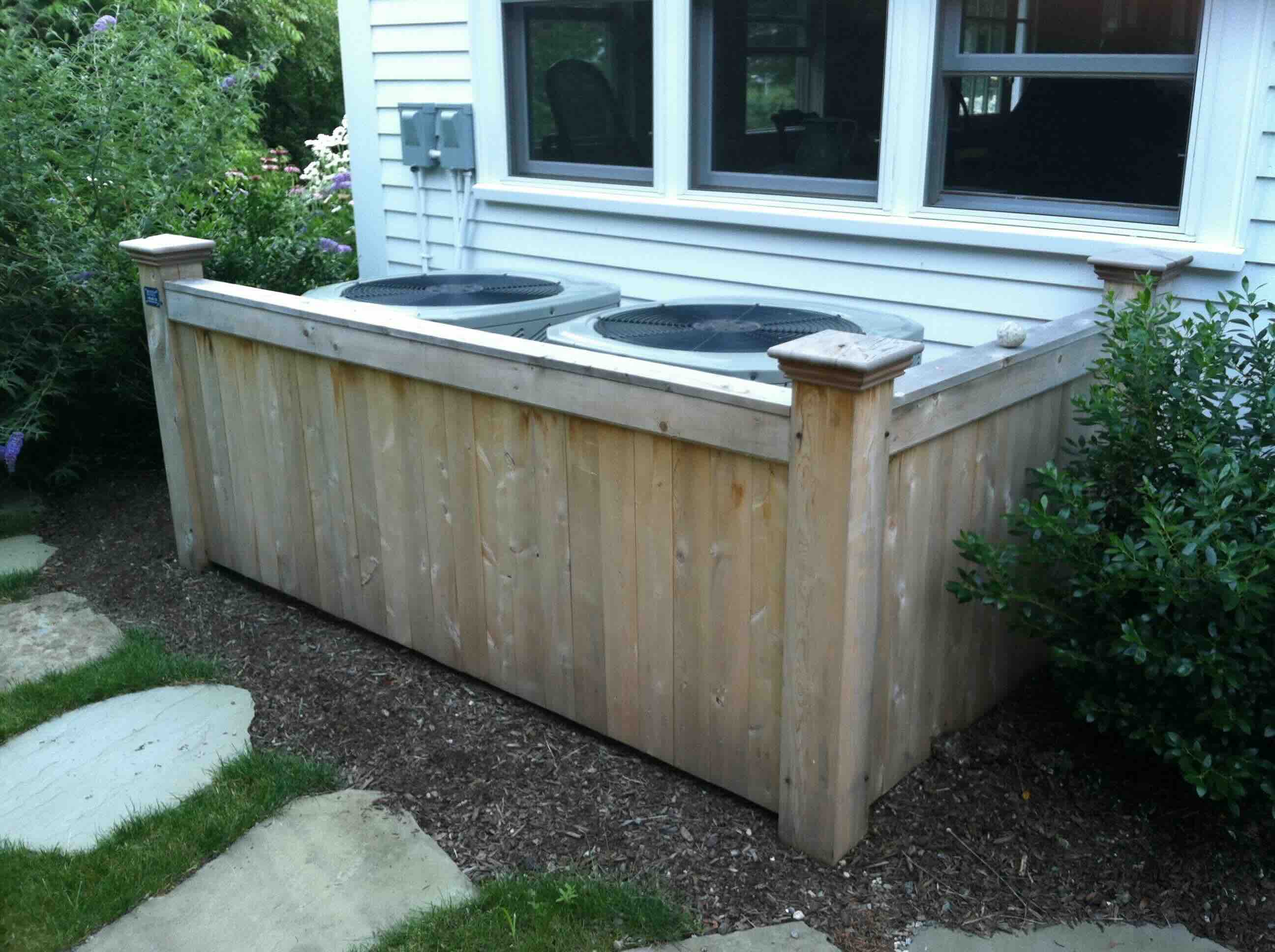

Home Maintenance
How To Hide A Window Air Conditioner From The Outside
Modified: March 7, 2024
Learn the best techniques for hiding a window air conditioner to maintain the aesthetics of your home. Discover effective home maintenance tips to keep your space cool and visually appealing from the outside.
(Many of the links in this article redirect to a specific reviewed product. Your purchase of these products through affiliate links helps to generate commission for Storables.com, at no extra cost. Learn more)
Introduction
Welcome to our comprehensive guide on how to hide a window air conditioner from the outside. Window air conditioners are a common sight in many homes, providing much-needed relief during the hot summer months. However, some homeowners may find them unsightly and want to find ways to discreetly hide them from view. Whether you are concerned about the aesthetics of your home or simply want to maintain a clean and unobstructed exterior, we have you covered.
In this article, we will explore various methods for hiding your window air conditioner, from DIY options to professional solutions. We will also provide important considerations to keep in mind before undertaking any hiding project, as well as tips for maintaining and protecting your hidden air conditioner. So, let’s dive in and discover the best ways to conceal your window air conditioner unit!
Key Takeaways:
- Concealing a window air conditioner can enhance the look of your home, provide privacy, protect from the elements, and improve outdoor living space. Consider DIY or professional options, but prioritize regular maintenance for optimal performance.
- Before hiding your window air conditioner, consider factors like accessibility, airflow, heat dissipation, safety, and local regulations. Choose from outdoor camouflage methods, DIY covers, or professional options, and ensure regular maintenance for long-lasting performance.
Read more: How To Tilt A Window Air Conditioner
Reasons to Hide a Window Air Conditioner
While window air conditioners serve the practical purpose of cooling our homes, they may not always be aesthetically pleasing. Here are some common reasons homeowners choose to hide their window air conditioner:
1. Visual Appeal:
Some homeowners prefer a clean and uncluttered exterior appearance for their home. A visible window air conditioner can disrupt the overall aesthetics of the façade. Hiding it can help maintain the desired aesthetic and make your home look more visually appealing.
2. Privacy:
Window air conditioners typically have open vents, which can allow people to see inside your home. This may compromise your privacy, especially if the unit is located near a window with a clear view. Hiding the air conditioner can help create a sense of privacy and prevent prying eyes from seeing inside your home.
3. Protection from the Elements:
Exposing your window air conditioner to the harsh outdoor elements can cause damage over time. Rain, snow, and excessive sunlight can lead to rust, corrosion, and other issues that may affect the unit’s performance. By hiding the air conditioner, you are providing an additional layer of protection against these elements, which can extend its lifespan.
4. Energy Efficiency:
When a window air conditioner is directly exposed to sunlight, it can absorb and generate heat, which can compromise its efficiency. By hiding the unit and keeping it shaded, you can prevent unnecessary heat absorption and help it operate more efficiently, ultimately reducing energy consumption and saving money on utility bills.
5. Improved Outdoor Living Space:
If you have an outdoor seating area or garden near your window air conditioner, hiding it can create a more pleasant and enjoyable outdoor space. The air conditioner may create noise or detract from the ambiance, and by concealing it, you can enhance the atmosphere and make your outdoor living area more inviting.
These are just a few reasons why homeowners opt to hide their window air conditioners. The good news is that there are various methods and options available to help you achieve your desired outcome. Let’s explore some considerations and practical solutions for hiding a window air conditioner.
Considerations Before Hiding a Window Air Conditioner
Before you start hiding your window air conditioner, it’s important to consider a few key factors to ensure a successful and functional outcome. Here are some important considerations:
1. Accessibility:
While hiding your window air conditioner may improve the appearance of your home, it’s essential to keep accessibility in mind. Make sure that the cover or disguising method you choose allows easy access to the unit for maintenance, cleaning, and repairs. Blocking access to the air conditioner can lead to potential issues down the line and may hinder its performance.
2. Airflow:
Proper airflow is crucial for the efficient operation of a window air conditioner. Before hiding it, ensure that the covering or concealment method you use doesn’t disrupt the airflow. The unit needs to draw in fresh air from the outside and expel hot air. Any obstruction to the airflow can affect the unit’s cooling capacity and efficiency, leading to decreased performance and potential damage.
3. Heat Dissipation:
A window air conditioner generates heat as it operates. It’s important to ensure that the hiding method you employ allows for proper heat dissipation. If the unit is unable to dissipate heat efficiently, it can lead to overheating, decreased performance, and potential damage. Be mindful of the materials and coverings used to ensure they allow heat to escape.
4. Safety:
When hiding a window air conditioner, it’s vital to prioritize safety. If you choose to build a cover or use any other concealment method, ensure it is secure and won’t pose any safety hazards. Avoid using flammable materials, and ensure that the cover does not obstruct any safety features or vents on the air conditioner. Safety should always be a top priority.
5. Local Regulations:
Before undertaking any modifications or alterations to your window air conditioner, it’s essential to check local regulations and codes. Some areas may have specific guidelines regarding what can or cannot be done to conceal or modify the unit. It’s important to ensure compliance with these regulations to avoid any potential fines or legal issues.
By considering these important factors before hiding your window air conditioner, you can make informed decisions and avoid potential problems. Now that we’ve covered the key considerations, let’s explore some outdoor camouflage methods and DIY options for hiding a window air conditioner.
Outdoor Camouflage Methods
If you’re looking for simple and effective ways to hide your window air conditioner, outdoor camouflage methods can be a great solution. These methods involve using natural elements or decorative items to blend the air conditioner into its surroundings. Here are some outdoor camouflage methods to consider:
1. Landscaping:
One of the easiest and most visually appealing ways to hide a window air conditioner is by strategically landscaping around it. You can use plants, shrubs, or small trees to create a natural screen that conceals the unit. Choose plants that have dense foliage and are suitable for your climate. Ensure that the landscaping design still provides adequate airflow and access to the air conditioner for maintenance purposes.
2. Trellis or Lattice:
A trellis or lattice structure can act as a decorative screen to hide the window air conditioner while adding a touch of elegance to your outdoor space. You can position the trellis or lattice panel in front of the unit, allowing climbing plants to grow on it and further conceal the air conditioner. This method provides both cover and airflow and can easily be customized to match your home’s style and aesthetics.
3. Privacy Panels:
Privacy panels are designed to create a barrier and block the view of certain areas. These panels can be made from various materials such as wood, metal, or even synthetic options like vinyl or composite. By installing a privacy panel in front of your window air conditioner, you can effectively hide it while still allowing for proper airflow. Choose a design that complements your home’s exterior and consider adding decorative elements to enhance the overall look.
4. Decorative Screens:
If you’re looking for a more artistic or unique approach, decorative screens can be a fantastic option. These screens come in a variety of designs and materials, ranging from metal patterns to intricately carved wood panels. By placing a decorative screen in front of your window air conditioner, you can both hide the unit and create an eye-catching focal point. Just ensure that the screen doesn’t obstruct the airflow and allows for easy access to the air conditioner.
5. Outdoor Artwork:
Add a touch of creativity to your outdoor space by incorporating outdoor artwork to camouflage your window air conditioner. This can include sculptures, wall-mounted artwork, or even large potted plants strategically placed around the unit. The artwork should be positioned in a way that distracts attention from the air conditioner while enhancing the overall outdoor ambiance.
Remember to choose camouflage methods that are practical, aesthetically pleasing, and allow for proper airflow and maintenance. These outdoor camouflage methods offer functional and visually appealing solutions to hide your window air conditioner. However, if you’re more inclined towards a DIY approach, let’s explore how to create a homemade air conditioner cover.
Consider using a decorative lattice or trellis to hide the window air conditioner from the outside. This can help to camouflage the unit while still allowing for proper airflow.
Creating a DIY Air Conditioner Cover
If you’re a hands-on homeowner who enjoys taking on DIY projects, creating a homemade air conditioner cover can be a rewarding endeavor. Not only will it allow you to customize the cover to your liking, but it can also save you money compared to purchasing a pre-made cover. Here’s a step-by-step guide to creating your own DIY air conditioner cover:
Step 1: Measure and Gather Materials
Start by measuring the dimensions of your window air conditioner. These measurements will determine the size of the cover you need to create. Once you have the measurements, gather the necessary materials. Depending on your preferences, you may need plywood, PVC pipes, fabric, hinges, screws, and other tools and hardware.
Step 2: Design the Cover
Consider the overall design and functionality you want for your air conditioner cover. Do you want it to blend in with the surrounding décor, or do you prefer a more decorative approach? Sketch out your design and make sure to include any additional features, such as hinges for easy access or vents to allow for proper airflow.
Step 3: Cut and Assemble the Frame
Using the plywood or PVC pipes, cut the pieces according to your measurements. If using plywood, assemble the pieces to create a frame that will fit around the air conditioner unit. If using PVC pipes, create a skeleton-like frame that will support the cover. Make sure the frame is sturdy and fits securely around the air conditioner.
Step 4: Add the Covering
Cover the frame with a suitable material that can withstand outdoor conditions. You can use weather-resistant fabric, metal mesh, or even decorative panels. Ensure that the covering material allows proper airflow and ventilation to prevent heat buildup. Attach the covering material securely to the frame, making sure it fits snugly without obstructing the air conditioner’s vents or controls.
Step 5: Finishing Touches
Personalize your DIY air conditioner cover by adding any desired finishing touches. You can paint the cover to match your home’s color scheme or apply decorative elements such as stencils or patterns. Seal the cover with a weather-proof sealant to protect it from the elements and ensure its durability.
Step 6: Installation
Carefully place the finished DIY air conditioner cover around the unit, ensuring it fits securely. If using hinges, make sure they are properly aligned and allow for easy access to the air conditioner for maintenance and repairs. Double-check that the cover does not obstruct the airflow and that there is enough space for proper ventilation.
Creating your own DIY air conditioner cover can be a fun and rewarding project. It allows you to tailor the design and functionality to your specific needs while adding a personal touch to your home’s exterior. However, if you prefer professional options or aren’t inclined towards DIY projects, there are other alternatives available. Let’s explore some professional options for hiding a window air conditioner.
Professional Options for Hiding a Window Air Conditioner
If you prefer a more polished and professional look for hiding your window air conditioner, there are several options available. These options are often pre-designed and specifically made to conceal air conditioning units while providing a stylish and seamless integration into your home’s exterior. Here are some popular professional options to consider:
1. Custom Air Conditioner Enclosures:
Professional companies offer custom-designed air conditioner enclosures that are tailored to your specific unit and home. These enclosures are typically made from durable materials such as aluminum or composite materials. They are designed to fit over the air conditioner and blend seamlessly with your home’s exterior. Custom enclosures often come in a range of finishes and designs, allowing you to choose an option that complements your home’s style.
2. Decorative Air Conditioner Screens:
Decorative air conditioner screens are designed to hide the window air conditioner while adding aesthetic appeal to your outdoor space. These screens come in various styles, patterns, and materials, including metal, wood, and synthetic options. They are typically freestanding and can be placed in front of or around the air conditioner, acting as a decorative element that complements your home’s architecture.
3. Retractable Air Conditioner Covers:
Retractable air conditioner covers provide a convenient and functional solution for hiding your window air conditioner. These covers are motorized and can be raised or lowered with the push of a button, allowing you to hide or reveal the unit as needed. Retractable covers are often made from durable fabrics or materials and come in various styles and colors, providing both aesthetic appeal and functionality.
4. Built-in Air Conditioner Cabinets:
For a more integrated and seamless look, you can opt for built-in air conditioner cabinets. These cabinets are custom-built to house the window air conditioner completely, offering a concealed appearance. They typically have front panels that can be opened to provide access for maintenance and repairs. Built-in cabinets can be constructed from a range of materials to match your home’s exterior, ensuring a cohesive and sophisticated look.
5. Wall-Mounted Air Conditioner Covers:
If you prefer to mount your window air conditioner on the wall instead of in a window frame, there are specialized covers available for these units. Wall-mounted air conditioner covers are designed to conceal the unit and provide a clean and streamlined appearance. They are typically made from durable materials such as aluminum and come in various colors and finishes to match your home’s exterior.
These professional options provide a sleek and polished look for hiding your window air conditioner. They offer convenience, durability, and often come with warranties, ensuring that your air conditioner remains hidden and protected for years to come. However, regardless of whether you choose a professional option or a DIY approach, it’s crucial to properly maintain and protect your hidden air conditioner to ensure its longevity.
Maintaining and Protecting Your Hidden Air Conditioner
Once you’ve successfully hidden your window air conditioner, it’s important to prioritize regular maintenance and proper protection to ensure its optimal performance and longevity. Here are some essential tips for maintaining and protecting your hidden air conditioner:
Regular Cleaning:
Keep your concealed air conditioner clean by regularly removing any debris, dust, or dirt that may accumulate on or around the unit. Blocked vents or coils can restrict airflow and reduce its efficiency. Use a soft brush or vacuum cleaner to gently clean the exterior surfaces and ensure unrestricted airflow.
Inspect for Damage:
Periodically inspect the hidden air conditioner for any signs of damage, such as cracks, leaks, or rust. If you notice any issues, address them promptly to prevent further damage. Check the seals around the unit to ensure a proper seal and prevent air leakage or drafts.
Trim Vegetation:
If you’ve used landscaping or plants to conceal your air conditioner, regularly trim and maintain them to prevent overgrowth. Overgrown plants can hinder proper airflow and potentially obstruct access to the unit for maintenance or repairs.
Weatherproofing:
Ensure that your hidden air conditioner is properly weatherproofed to protect it from the elements. If using a cover or enclosure, make sure it is designed to withstand harsh weather conditions and is adequately sealed. Consider using weatherproof sealants or coverings to protect vulnerable areas from water damage.
Professional Maintenance:
Schedule regular professional maintenance for your hidden air conditioner. An HVAC technician can inspect the unit, clean the internal components, and address any potential mechanical or electrical issues. Regular maintenance can prolong the life of your air conditioner and ensure it continues to operate efficiently.
Protect from Extreme Temperatures:
Extreme temperatures can affect the performance of your hidden air conditioner. During periods of extreme heat or cold, take extra precautions to protect the unit. Consider adding insulation or weatherstripping around the air conditioner to improve energy efficiency and prevent heat loss or gain.
Secure the Area:
Ensure that the area around your hidden air conditioner is secure and inaccessible to prevent vandalism or tampering. Consider installing security cameras or other deterrence measures to protect your investment.
Follow Manufacturer’s Recommendations:
Always follow the manufacturer’s recommendations for maintenance and care specific to your air conditioner model. This includes using appropriate cleaning products, following recommended service intervals, and adhering to any specific guidelines provided in the user manual.
By following these maintenance and protection tips, you can ensure that your hidden air conditioner remains in optimal condition and operates efficiently for years to come. Remember, regular care and attention will help extend the lifespan of your air conditioner and contribute to a comfortable and pleasant home environment.
Conclusion
Hiding a window air conditioner from the outside is a common desire among homeowners who prioritize the visual appeal of their homes or seek to maintain a tidy and unobstructed exterior. From outdoor camouflage methods to DIY covers and professional options, there are numerous ways to conceal your air conditioner without compromising its functionality.
Before embarking on any hiding project, it’s important to consider factors such as accessibility, airflow, heat dissipation, safety, and local regulations. By taking these considerations into account, you can ensure that your air conditioner remains accessible, efficient, and compliant with any regulations or codes in your area.
Outdoor camouflage methods, such as landscaping, trellises, privacy panels, decorative screens, and outdoor artwork, offer simple yet effective ways to blend your air conditioner into its surroundings. These methods allow you to maintain the aesthetic harmony of your outdoor space while providing proper airflow and access for maintenance.
For those who prefer a professional and polished look, there are pre-designed options available, including custom enclosures, decorative screens, retractable covers, and built-in cabinets. These professional options offer convenience, durability, and a seamless integration into your home’s exterior, often coming in a variety of finishes and designs to suit your aesthetic preferences.
Regardless of the hiding method you choose, it is crucial to prioritize regular maintenance and proper protection for your hidden air conditioner. This includes regular cleaning, inspection for damage, trimming vegetation, weatherproofing, scheduling professional maintenance, protecting from extreme temperatures, securing the area, and following manufacturer’s recommendations.
Hiding your window air conditioner can not only enhance the visual appeal of your home but also provide privacy, protection from the elements, energy efficiency, and improved outdoor living space. Whether you opt for a DIY approach or invest in professional options, finding the right hiding method will allow you to enjoy the benefits of a concealed air conditioner while maintaining a harmonious exterior.
Remember, a hidden air conditioner doesn’t have to sacrifice functionality. By carefully considering your options and implementing proper maintenance, your hidden air conditioner will continue to provide cooling comfort throughout the hot summer months, ensuring a comfortable and inviting home environment for you and your loved ones.
Frequently Asked Questions about How To Hide A Window Air Conditioner From The Outside
Was this page helpful?
At Storables.com, we guarantee accurate and reliable information. Our content, validated by Expert Board Contributors, is crafted following stringent Editorial Policies. We're committed to providing you with well-researched, expert-backed insights for all your informational needs.
